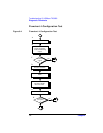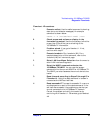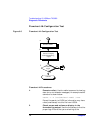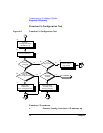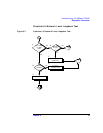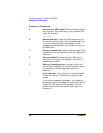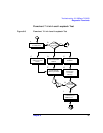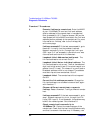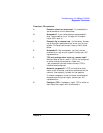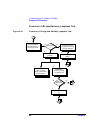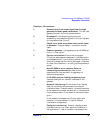
80 Chapter6
Troubleshooting 10/100Base-TX/9000
Diagnostic Flowcharts
Flowchart 6 Procedures
A. Host entry in ARP cache? Using arp, check that an
entry exists for the remote host in your system's ARP
cache. For example:
arp spiff
B. Remote host up? If there is no ARP cache entry for
the remote host, first check that the remote host is up.
If not, the remote host has not broadcast an ARP
message, and that probably is why there is no entry in
the ARP cache.
C. Bring-up remote host. Have the node manager of the
remote host bring that system up and start again with
flowchart 1.
D. Entry complete? Perhaps there is an ARP cache
entry, but it is wrong or not complete. If the entry is
complete, go to step F.
E. Use arp to complete entry. Using arp, enter the
correct Station Address. For more information, refer to
the arp(1M) online man page. Start again with
flowchart 1.
F. ping local host. Using ping, do an internal loopback
on your own system. In other words, ping your own
system.
If the internal loopback is successful, your system is
operating properly to the Network Layer (OSI Layer 3).
In addition, you know an ARP cache entry for the
remote host exists on your system. Start again with
Flowchart 1.



